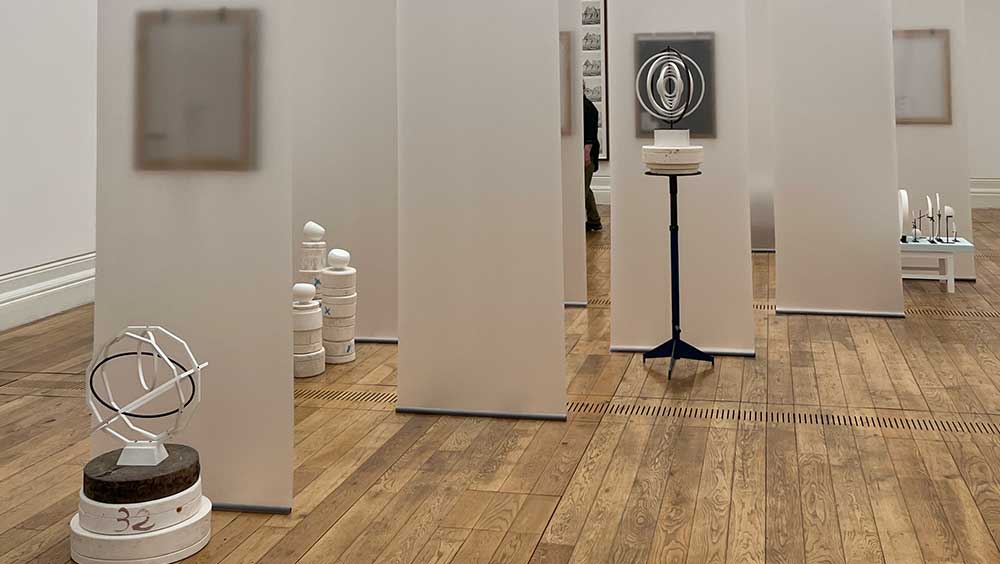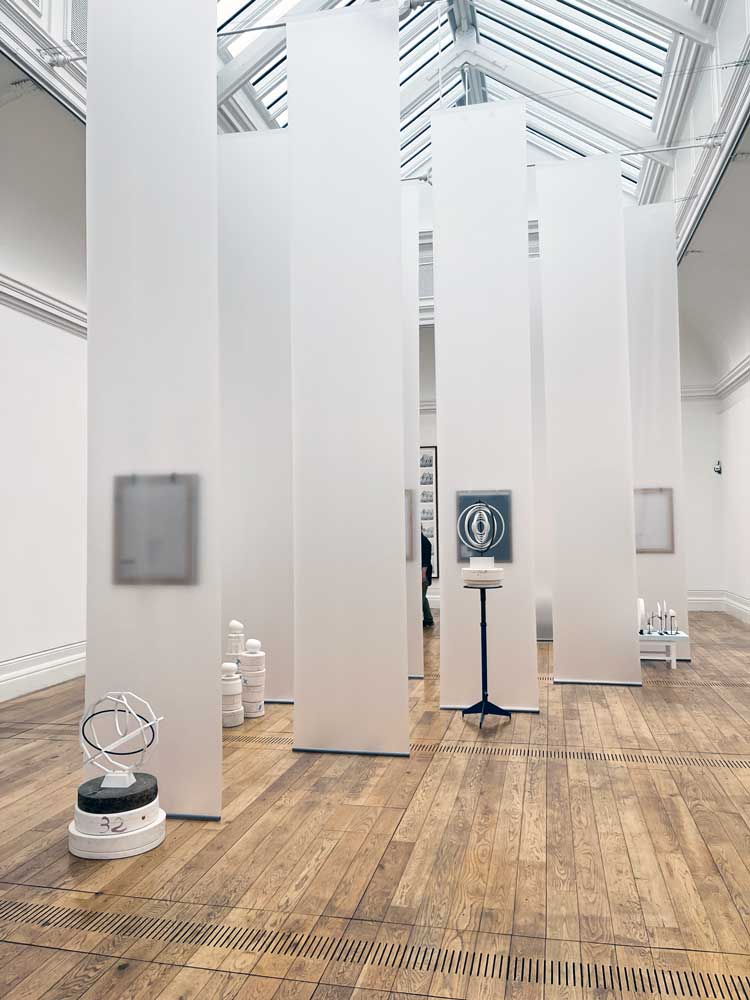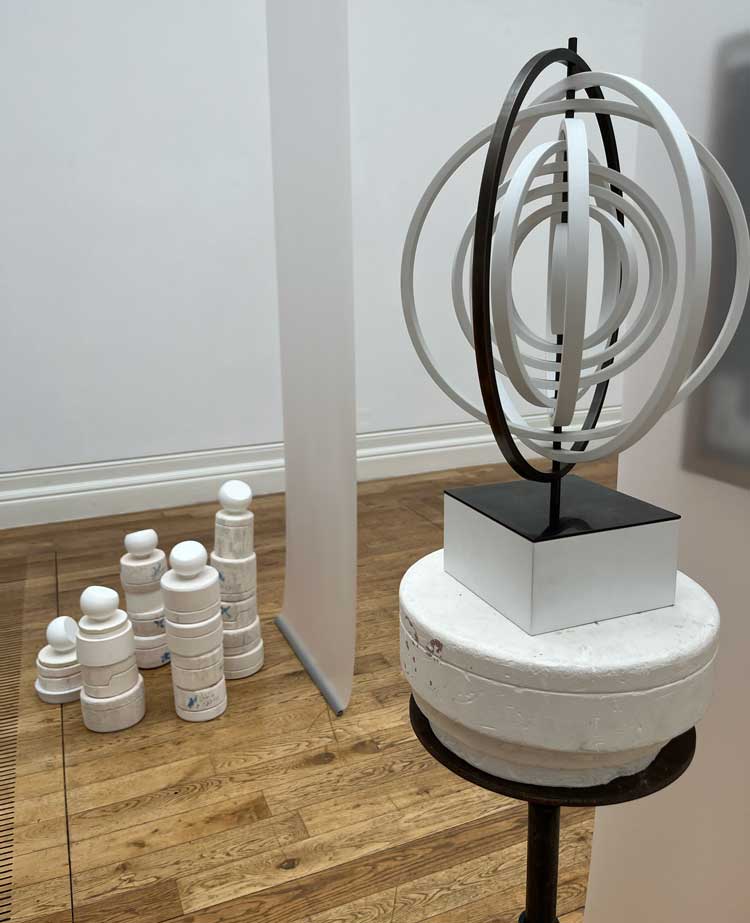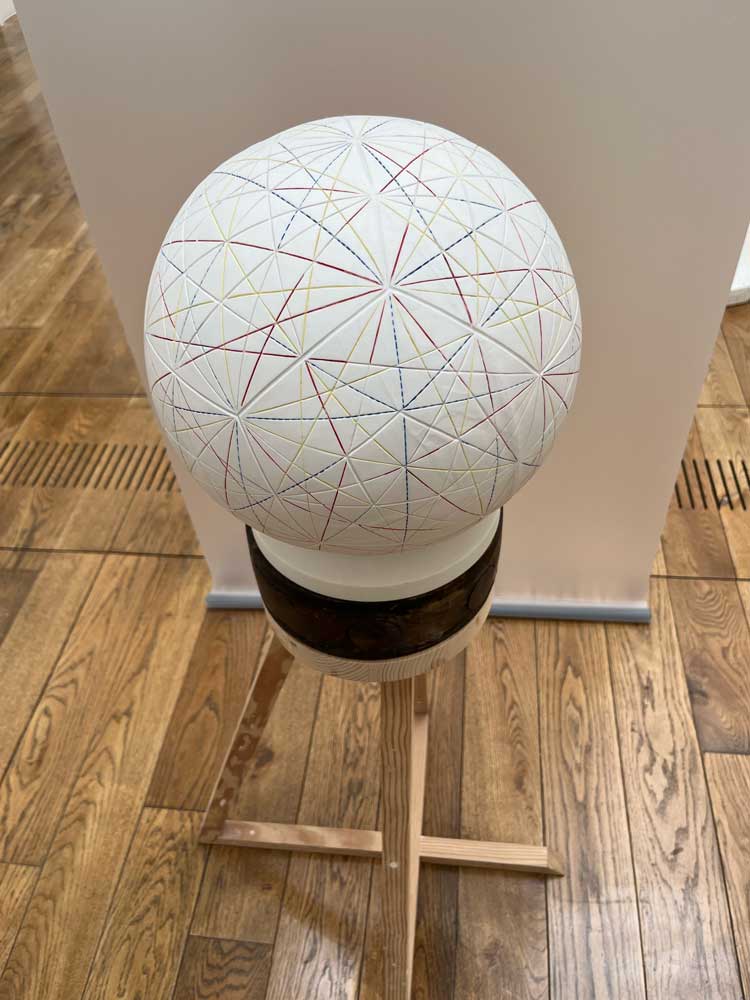
Noémie Goudal: Contours of Certainty, installation view, Mostyn Art Gallery, Llandudno, 2024. Photo: Veronica Simpson.
Mostyn Art Gallery, Llandudno
13 July – 7 September 2024
by VERONICA SIMPSON
One of the enduring inspirations cited by the artist Noémie Goudal (b1984, France), in her work across photography, film and performance, is Italo Calvino’s timeless meditation on imagined urban experience, Invisible Cities; a book described by Salman Rushdie as not so much a novel as a “fugue on the nature of the city”. In the same way, Goudal’s work is less like photography, and more like a fugue on the nature of perception, a spatial experiment in our understanding of landscape, material and form.
-Pic-V-Simpson.jpg)
Noémie Goudal. Soulèvement I, 2018. Inkjet print. Courtesy of EPIC Art. Photo: Veronica Simpson.
For example, in her Soulèvement series (2013 onwards), Goudal constructed a scaffold on the beach, in front of a large rock, capturing multiple reflections of that rock in mirrored panels hung on the scaffold, and manipulated (by assistants) to fracture and fragment the image, under Goudal’s instruction. It is an almost out-of-body experience, staring at these mirage-like rock portraits, slivers of white, coastal sky penetrating the seemingly solid body of rock in jagged spikes. Several of these Soulèvements are here in Mostyn, as is a more recent landscape series in which she plays with our sense of the curve of a mountain by folding a variety of photographs (taken with narrow and wide-angle lenses) of the same mountain in and around each other, so that the images match, but the amount of space that each image occupies doesn’t (it’s a sensation you have to experience with the work; words cannot do it justice). In this latter series, she always makes visible the mechanisms by which her wizardry is achieved, by leaving in the frame the clips or props and tripods on which the elements stand. She wants us to know this is a fabrication.

Noémie Goudal: Contours of Certainty, installation view, Mostyn Art Gallery, Llandudno, 2024. Photo: Veronica Simpson.
In Mostyn’s two long, double-height, top-lit galleries, Goudal has further piqued our curiosity and exploded our sense of landscape, form and material by combining her elaborately constructed black-and-white photographs with a series of luminous ceramic sculptures. The fruit of a five-year collaboration with France’s Sevres factory, they combine elemental geometries – mostly variations on a sphere – with pale, porcelain or plaster surfaces to create covetable objects, beautiful in and of themselves. These sculptures are the first thing we see as we enter the gallery. Each sculpture faces us, framed against a pale, semi-opaque banner that drops from the rooflights, funnelling that copious wash of daylight down the length of the banner to the porcelain at its base. Hung on the reverse of these banners (their frames visible through it) are Goudal’s photographs. In this way, you only encounter the photographs on your return through the gallery – unless you break up the usual forward procession by carving your own path through the space. I would say that the spacing of the banners, with their sculpture/photograph oppositions, invites us to do exactly that: weave through and around the works, creating our own interactive experience.
-2023-Pic-V-Simpson.jpg)
Noémie Goudal. La Terre et Le Vivant de James Lovelock (The Earth and the Living by James Lovelock), 2023. Porcelain. Courtesy of Edel Assanti and the Artist. Photo: Veronica Simpson.
As the conversation between photograph and sculpture unfolds, it feels as if Goudal’s three-dimensional works represent the building blocks by which we understand hills, rocks and mountains, making it all the more apparent, as we survey the photographs behind and beyond them, that these two-dimensional images are, in fact, deconstructions of the said hills, rocks and mountains. It is an unsettling but uplifting experience.
Doubt, Goudal has said, “is not a hindrance, but a gateway to deeper understanding”. We are told, in the accompanying text, that Goudal’s work is less visual spectacle, more philosophical provocation. But the extent of her philosophical and scientific investigations – and they go deep and wide – would not be apparent to the casual observer. There are no wall captions, no explanatory texts next to each glowing porcelain sculpture or the photographs that hover behind them. The bare bones of each sculpture’s title, provided only on the exhibition leaflet, offer clues – each one is clearly an homage to a particular scientist’s, philosopher’s or poet’s perspective, ranging from Newton to Dante. But unless you have had a classical education, the significance may well be lost on you.

Noémie Goudal. Right: Les Enfers de Dante (Dante’s Hells), 2023. Corian, steel and wood. Left: Le Monde Aleatoire d’Aristote (Aristotle’s Random World), 2023. Porcelain. Courtesy of Edel Assanti and the Artist. Photo: Veronica Simpson.
At the opening, Goudal explains how her philosophical research has shifted focus from print to sculpture: “I have been obsessed for a number of years with the layering within the image, playing with how an image seems, but within the image you have so many layers of perspective you can unfold, cover, recover. That’s why I’m using a lot of paper backdrops to play with the construction of the image. I do a lot of research; for many years, I researched the history of science. I read but I also interview science historians.”
Through her research, she noticed how theories about the world around us are constantly evolving, and have done so over many centuries. As a result, our understanding is also shifting and each time this happens the world is revealed to us anew. She says: “What I found really inspiring is that you can have the same landscape, for example, the same sea or mountains, but you see it from many different angles, depending on whether your view is from antiquity, the middle ages, the Renaissance etc … What I’m trying to do with my work in general is explore relationship with the land through many different points.”

Noémie Goudal. Le Réseau Pentagonal d’Elie De Beaumont (The Pentagonal Network of Elie De Beaumont), 2023. Porcelain. Courtesy of Edel Assanti and the Artist. Photo: Veronica Simpson.
What inspired Goudal’s move into three dimensions? “I wanted to do a series of sculptures, but I wasn’t a sculptor and I have never worked with three-dimensional structures before. I went to Sevres National Ceramics Museum and I gave them a proposal. I said: would you like to do this project with me? I worked with a historian of science, to gather the 15 most important theories of how the world was made, from antiquity to now. Sadly, he died last year, but he was the specialist of the theories of the Earth. So, he helped me also to understand them because with a lot of them you don’t have any drawings, perhaps only writing, like with Aristotle, Plato, Newton, so he helped me understand and then we’d draw sketches and get to the point where he’d agree this is roughly what we think it could be. I call them Terralab, because they are essentially experiments … They are a tool. If you can hold it in your hands, it means you can understand it. And in the whole grammar of how I present them at Mostyn, it’s with the actual tools of what they use at Sevres. In all my work, in general, I like to show a little bit of the construction within the work, I give hints and clues within the photograph.”
Goudal agrees that the presentation is deliberately making the audience work to understand what is going on. “I like the idea that you have more than one viewpoint: you have three sculptures together, then you have a picture, and then the back of a sculpture. I’m trying to offer a different point of view.”
For me, there are many profound and enriching aspects of this show. But the most visceral and present impression, as I walked into these tall, top-lit spaces, is that all of this is a conversation with light – the porcelain, the staging, and above all the photography. Which brings us back to the essence of photography itself. No wonder she has been shortlisted for France’s most prestigious contemporary art prize, the Prix Marcel Duchamp 2024.
• Noémie Goudal’s work will be included with the other three shortlisted Prix Marcel Duchamp artists in a show at the Centre Pompidou, Paris, opening on 1 October 2024. The winner will be announced on 14 October.